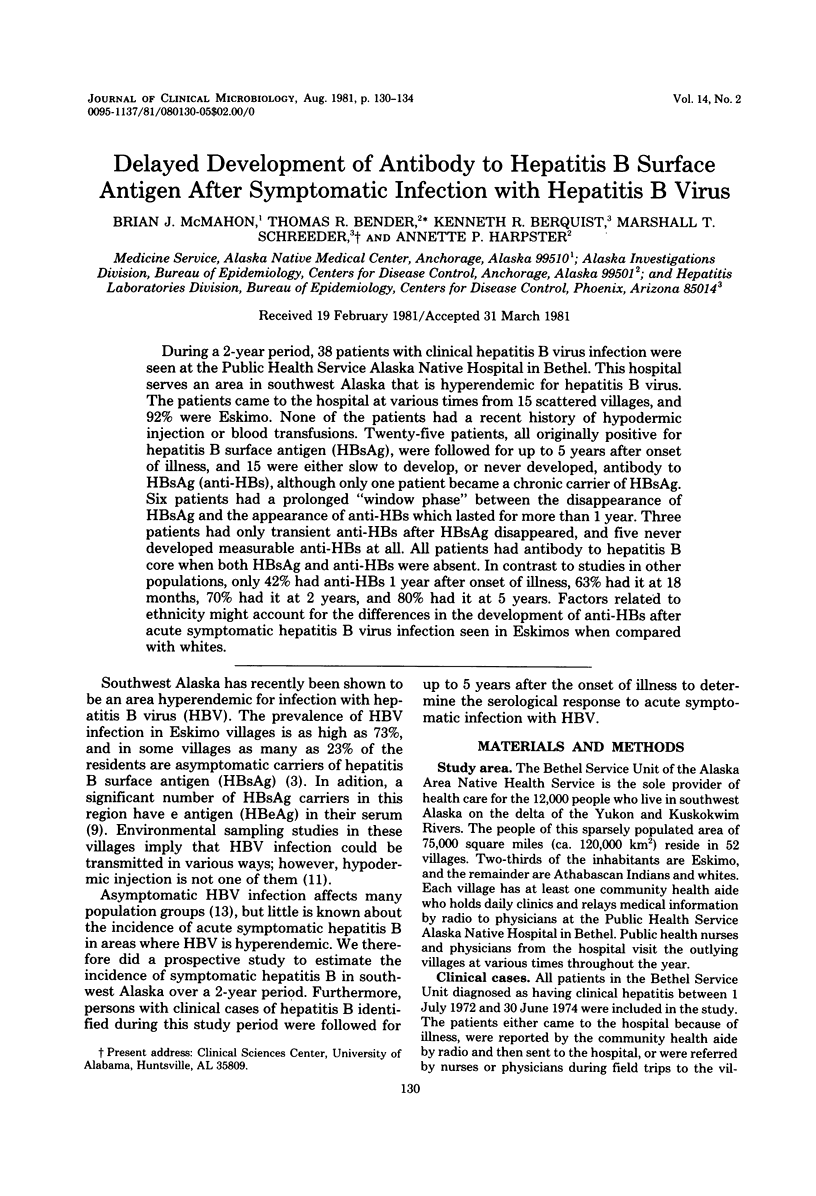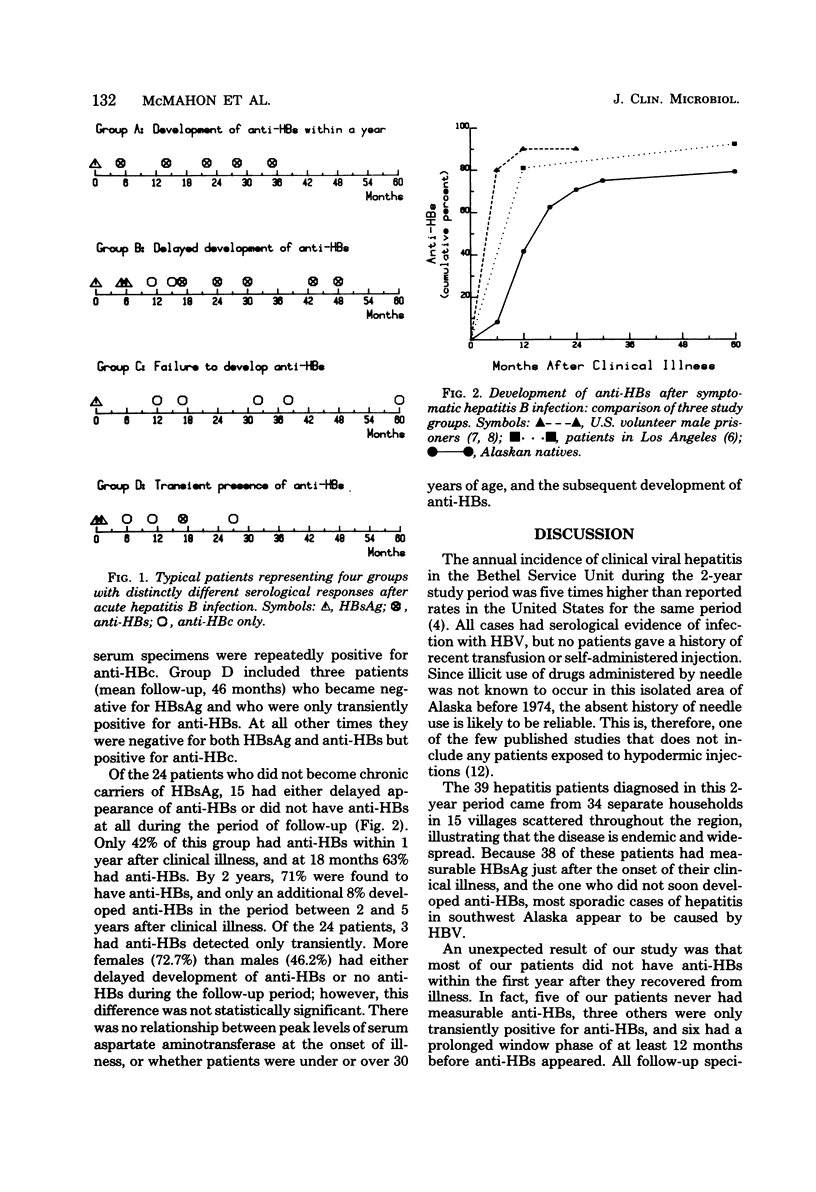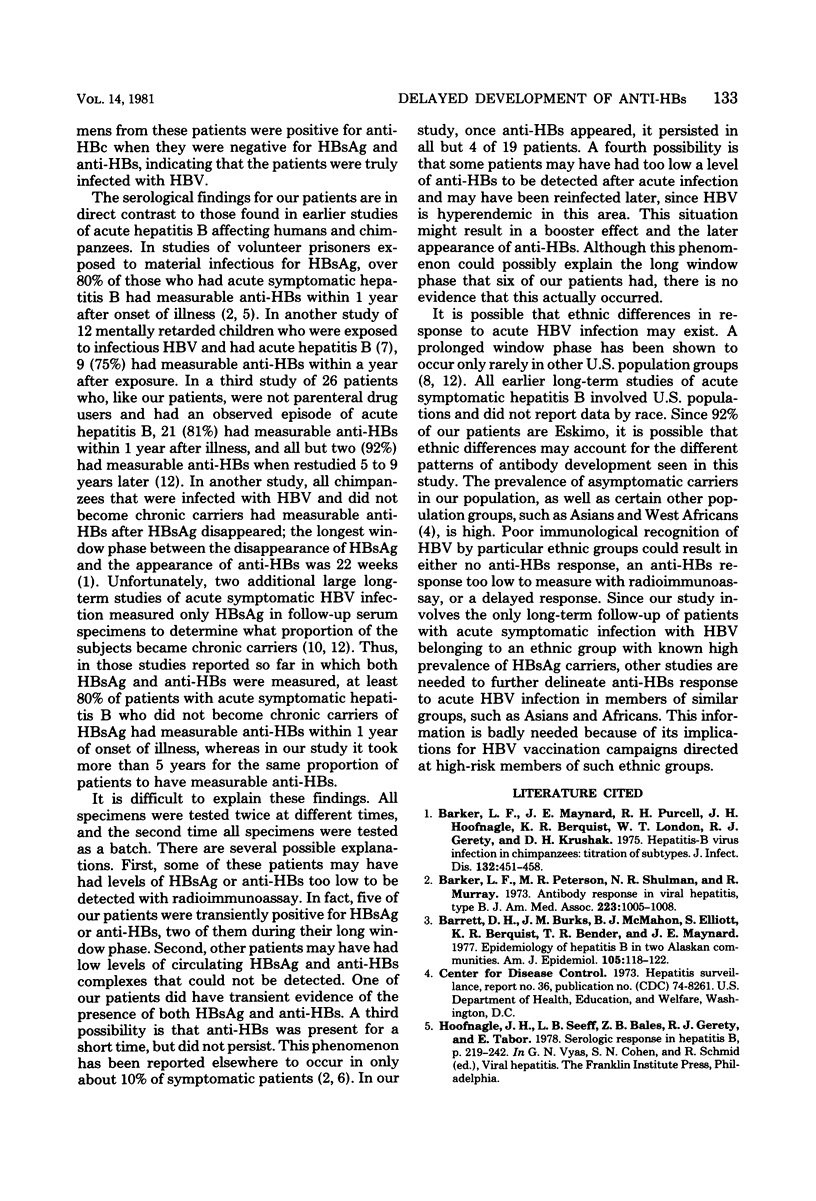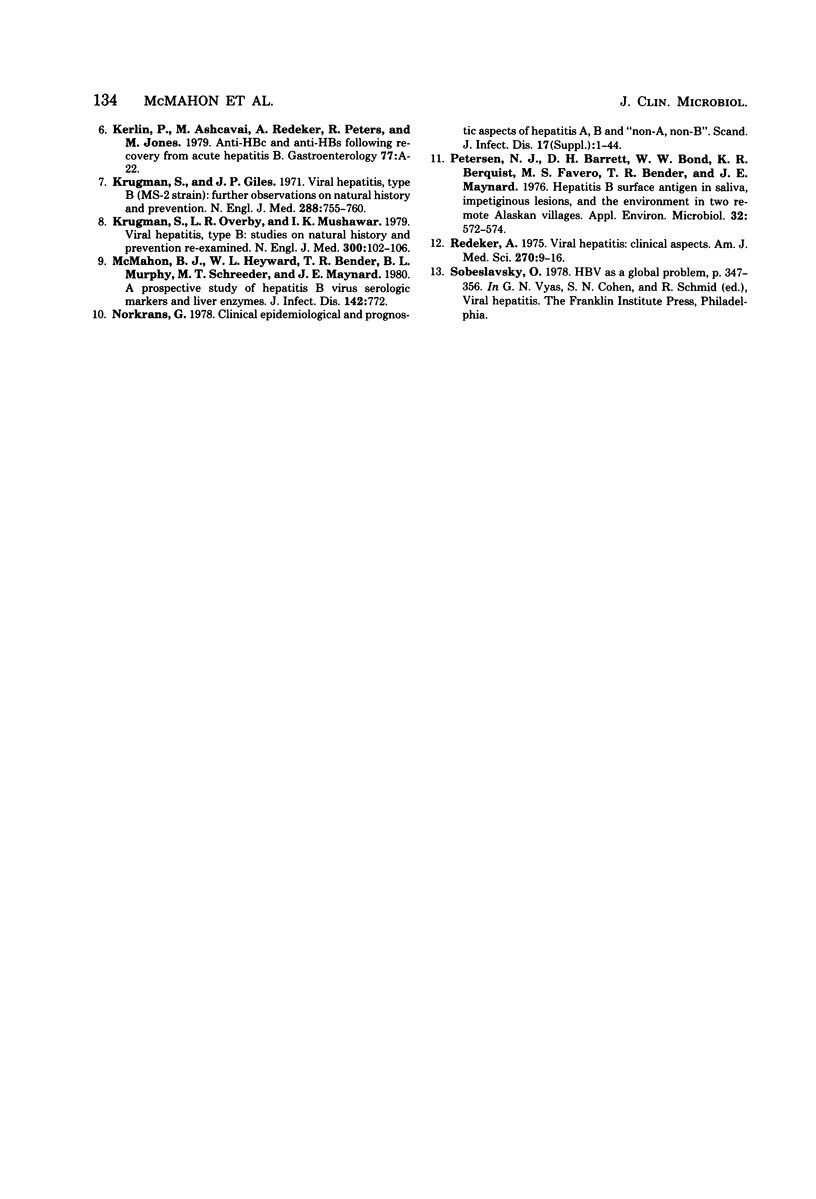Abstract
During a 2-year period, 38 patients with clinical hepatitis B virus infection were seen at the Public Health Service Alaska Native Hospital in Bethel. This hospital serves an area in southwest Alaska that is hyperendemic for hepatitis B virus. The patients came to the hospital at various times from 15 scattered villages, and 92% were Eskimo. None of the patients had a recent history of hypodermic injection or blood transfusions. Twenty-five patients, all originally positive for hepatitis B surface antigen (HBsAg), were followed for up to 5 years after onset of illness, and 15 were either slow to develop, or never developed, antibody to HBsAg (anti-HBs), although only one patient became a chronic carrier of HBsAg. Six patients had a prolonged "window phase" between the disappearance of HBsAg and the appearance of anti-HBs which lasted for more than 1 year. Three patients had only transient anti-HBs after HBsAg disappeared, and five never developed measurable anti-HBs at all. All patients had antibody to hepatitis B core when both HBsAg and anti-HBs were absent. In contrast to studies in other populations, only 42% had anti-HBs 1 year after onset of illness, 63% had it at 18 months, 70% had it at 2 years, and 80% had it at 5 years. Factors related to ethnicity might account for the differences in the development of anti-HBs after acute symptomatic hepatitis B virus infection seen in Eskimos when compared with whites.
Full text
PDF




Selected References
These references are in PubMed. This may not be the complete list of references from this article.
- Barker L. F., Maynard J. E., Purcell R. H., Hoofnagle J. H., Berquist K. R., London W. T., Gerety R. J., Krushak D. H. Hepatitis B virus infection in chimpanzees: titration of subtypes. J Infect Dis. 1975 Oct;132(4):451–458. doi: 10.1093/infdis/132.4.451. [DOI] [PubMed] [Google Scholar]
- Barker L. F., Peterson M. R., Shulman N. R., Murray R. Antibody responses in viral hepatitis, type B. JAMA. 1973 Feb 26;223(9):1005–1008. [PubMed] [Google Scholar]
- Barrett D. H., Burks J. M., McMahon B., Elliott S., Berquist K. R., Bender T. R., Maynard J. E. Epidemiology of hepatitis B in two Alaska communities. Am J Epidemiol. 1977 Feb;105(2):118–122. doi: 10.1093/oxfordjournals.aje.a112362. [DOI] [PubMed] [Google Scholar]
- Krugman S., Giles J. P. Viral hepatitis, type B (MS-2-strain). Further observations on natural history and prevention. N Engl J Med. 1973 Apr 12;288(15):755–760. doi: 10.1056/NEJM197304122881503. [DOI] [PubMed] [Google Scholar]
- Krugman S., Overby L. R., Mushahwar I. K., Ling C. M., Frösner G. G., Deinhardt F. Viral hepatitis, type B. Studies on natural history and prevention re-examined. N Engl J Med. 1979 Jan 18;300(3):101–106. doi: 10.1056/NEJM197901183000301. [DOI] [PubMed] [Google Scholar]
- McMahon B. J., Heyward W. L., Bender T. R., Murphy B. L., Schreeder M. T., Maynard J. E. A prospective study of hepatitis B virus serologic markers and liver enzymes. J Infect Dis. 1980 Nov;142(5):772–772. doi: 10.1093/infdis/142.5.772. [DOI] [PubMed] [Google Scholar]
- Norkrans G. Clinical, epidemiological and prognostic aspects of hepatitis A, B and "non-A, non-B". Scand J Infect Dis Suppl. 1978;(17):1–44. doi: 10.3109/inf.1978.10.suppl-17.01. [DOI] [PubMed] [Google Scholar]
- Petersen N. J., Barrett D. H., Bond W. W., Berquist K. R., Favero M. S., Bender T. R., Maynard J. E. Hepatitis B surface antigen in saliva, impetiginous lesions, and the environment in two remote Alaskan villages. Appl Environ Microbiol. 1976 Oct;32(4):572–574. doi: 10.1128/aem.32.4.572-574.1976. [DOI] [PMC free article] [PubMed] [Google Scholar]
- Redeker A. G. Viral hepatitis: clinical aspects. Am J Med Sci. 1975 Jul-Aug;270(1):9–16. doi: 10.1097/00000441-197507000-00003. [DOI] [PubMed] [Google Scholar]


